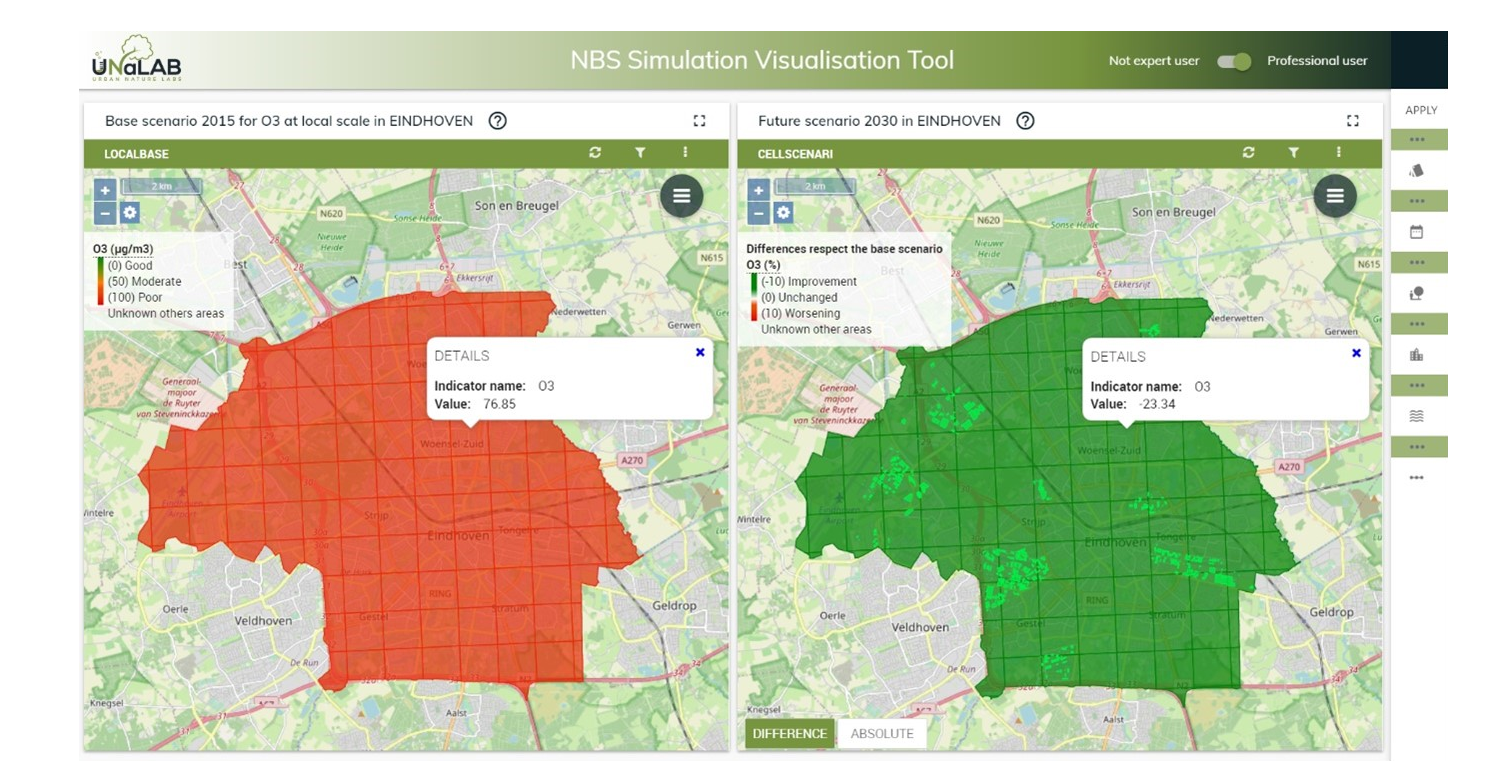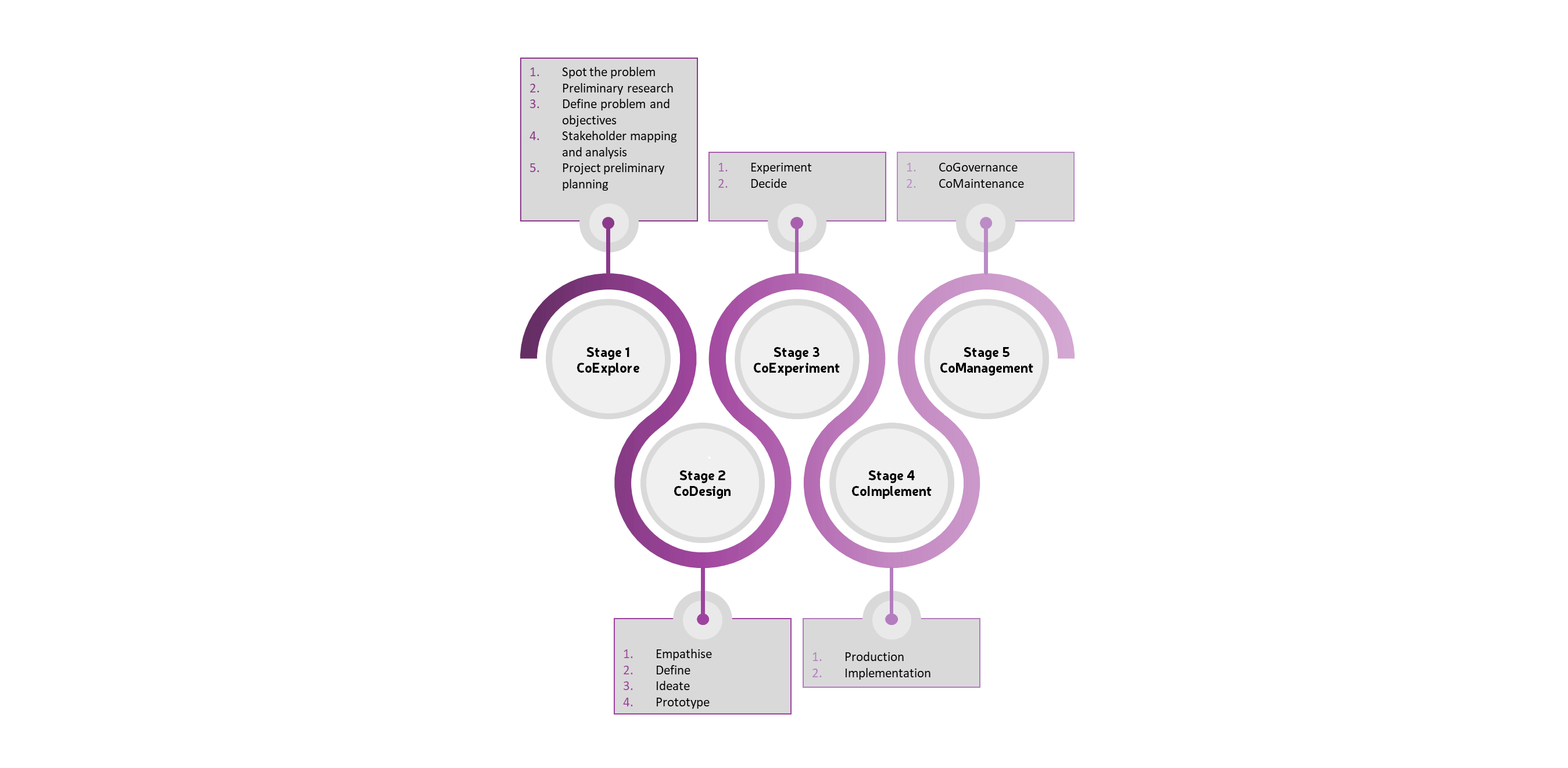
Assessing the impacts of nature-based solutions using the Systemic Decision Support Tool and the NBS Simulation Visualisation Tool
- Mon, 27/09/2021
At the turn of the third decade of the 21st century, we find ourselves and our ideas living and thriving in a digital world. Today, making an impact and influencing decisions is easier thanks to the various digital tools and software. In UNaLab, we strive to develop digital tools that help municipalities, cities and citizens to influence the ways climate adaptation is approached in their cities. In this series of UNaLab ICT tools stories, we talk about the ICT tools developed and tested in UNaLab for supporting the implementation of nature-based solutions (NBS) in any city throughout and beyond the project duration at each stage, from visioning to monitoring NBS. Each series will present a single UNaLab ICT tool and discuss its place in the adaptive management cycle* (Life Cycle Co‐Creation Process) of NBS implementation.
A TOOL THAT SUPPORTS NBS UP-SCALING AND REPLICATION
In previous newsletters, we have presented the Open Nature Innovation Arena (ONIA) and the City Performance Monitor. This time, we introduce the Systemic Decision Support Tool (SDST) user interface, namely the NBS Simulation Visualisation Tool (NBS-SVT), that enables users to compare baseline conditions (without NBS) with the forecasted impacts of different proposed NBS strategies.
The SDST/NBS-SVT is a multi-model scenario visualisation tool that uses a map-based view to present the potential direct and indirect environmental, social and economic impacts of different proposed NBS. The tool allows users to compare and visualise different NBS scenarios without (2030) and with (2050) climate change and/or population growth relative to the reference baseline situation (2015).
The SDST/NBS-SVT can be useful for municipalities, citizens and other stakeholders that want to test and compare different NBS scenarios in order to evaluate the expected benefits of adopting specific NBS strategies, or to support decision-making with regard to NBS replication and up-scaling.
HOW DOES SDST/NBS-SVT WORK IN PRACTICE?
The SDST/NBS-SVT was designed to be highly intuitive and easy to operate. The user first chooses one of the proposed NBS scenarios to evaluate. Several scenarios are available for each of the three UNaLab front-runner cities, including the implementation of green roofs, bioswales, street trees, green/blue spaces and river daylighting. Hence, it allows stakeholders to observe the effects of these diverse NBS in several locations in the city, either individually or in mixed scenarios.
The user then selects the environmental, social or economic indicator they are interested in evaluating. The SDST/NBS-SVT uses a set of Key Impact Indicators (KIIs) to express how each NBS intervention is expected to impact urban conditions in the face of global change. KIIs for the following categories are included in the SDST/NBS-SVT: urban heat and air quality, flooding and water quality, and sprawl, gentrification and real-estate valuation.
The results are displayed in the form of maps, with the baseline and NBS simulation results placed side-by-side for easy comparison. Additionally, the results can be observed in the form of tables and charts. The user can also decide whether they want to assess the forecasted NBS impacts at the local, neighbourhood or city scale, all of this with or without considering future climate change and/or population growth.

THE SDST/NBS-SVT AS PART OF THE ADAPTIVE MANAGEMENT CYCLE
Given the model-based nature of the simulations as well as the focus on decision support and co-creative processes, the SDST/NBS-SVT is most notably useful before NBS implementation takes place, while also aiding in fine-tuning and adjusting the solutions to achieve the best outcome. In the context of the adaptive management cycle (in particular the Life Cycle Co‐Creation Process (LCCCP); see Rios-White et al., 2020), the development and application of the SDST/NBS-SVT comprises Co-exploring city challenges, Co-designing possible NBS to deal with these challenges and, finally, Co-experimenting with these possible NBS using the SDST/NBS-SVT.

- During the Co-explore stage, the preparation of the SDST/NBS-SVT supports the identification and mapping of environmental, social and economic problems faced by the city and that could be addressed with NBS (Spot the problem).
- During the Co-design stage, the preparation of the SDST/NBS-SVT supports the identification of possible types and locations of NBS to address the abovementioned problems (Ideate).
- During the Co-experiment stage, the use of the SDST/NBS-SVT aims to explore and discuss the multiple impacts of the ideated NBS (Experiment) and come to an agreement about the most beneficial NBS (Decide).
The internet-based user-interface of the SDST, the NBS-SVT, is available here. The homepage of the SDST/NBS-SVT provides a short introduction to the application, the NBS concept and impact indicators, and introduces the front-runner cities available for selection. In turn, a tutorial guides the user through the user interface – from the selection of the NBS scenario to the visualisation of NBS scenario simulation results. The user-interface has been developed in strict collaboration between the University of Aveiro and Engineering, using the interoperability and data visualisation features provided by the DigitalEnabler® – the standard and open source interoperability data platform at the base of all the UNaLab tools.
*The adaptive management cycle, such as the Life Cycle Co‐Creation Process (Rios-White et al., 2020) or Plan-Do-Check-Act cycle, is an iterative process involving a series of stages, stakeholders and actions aimed at continuous development and robust decision-making.